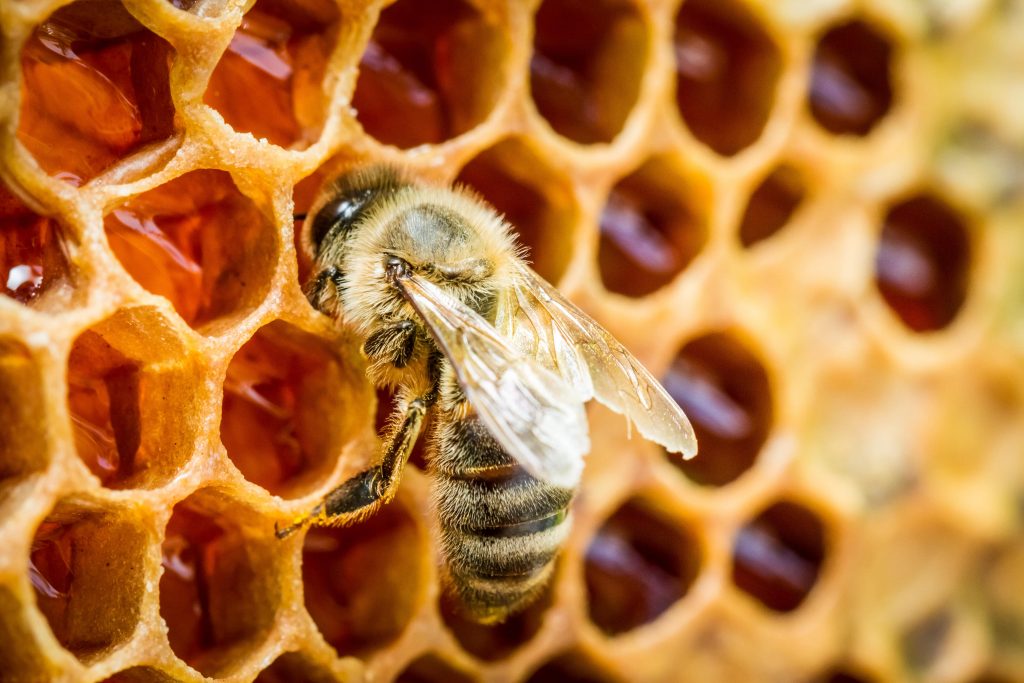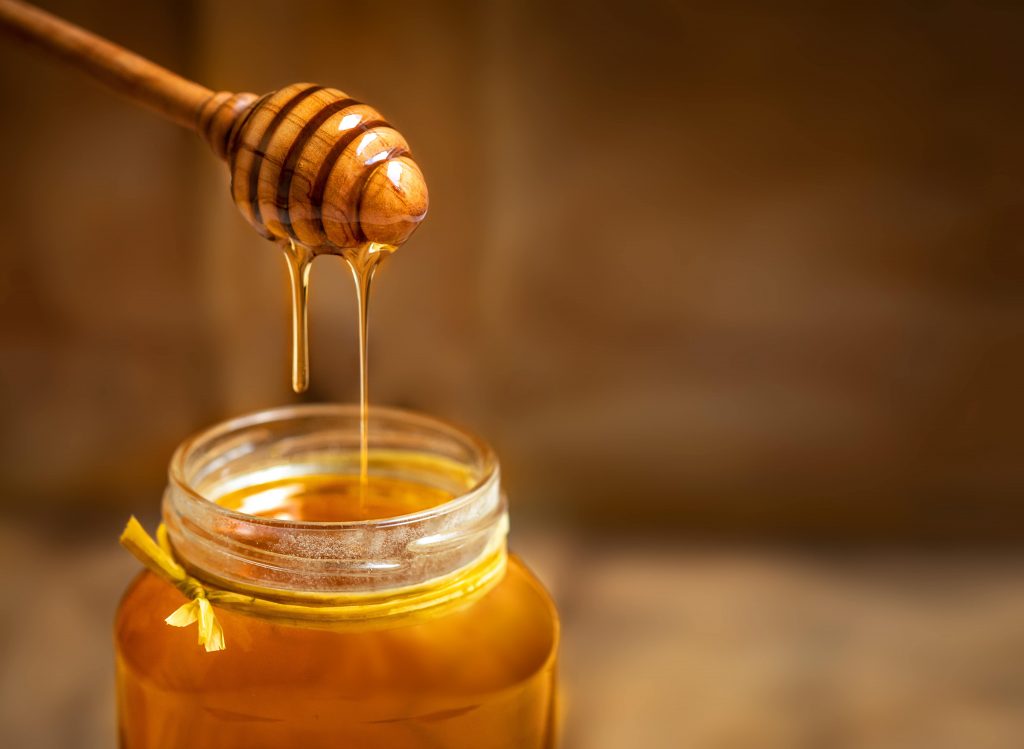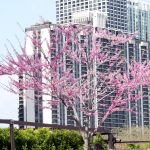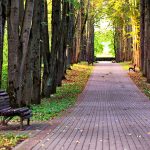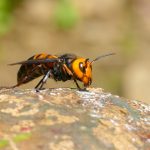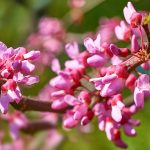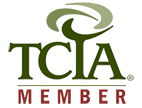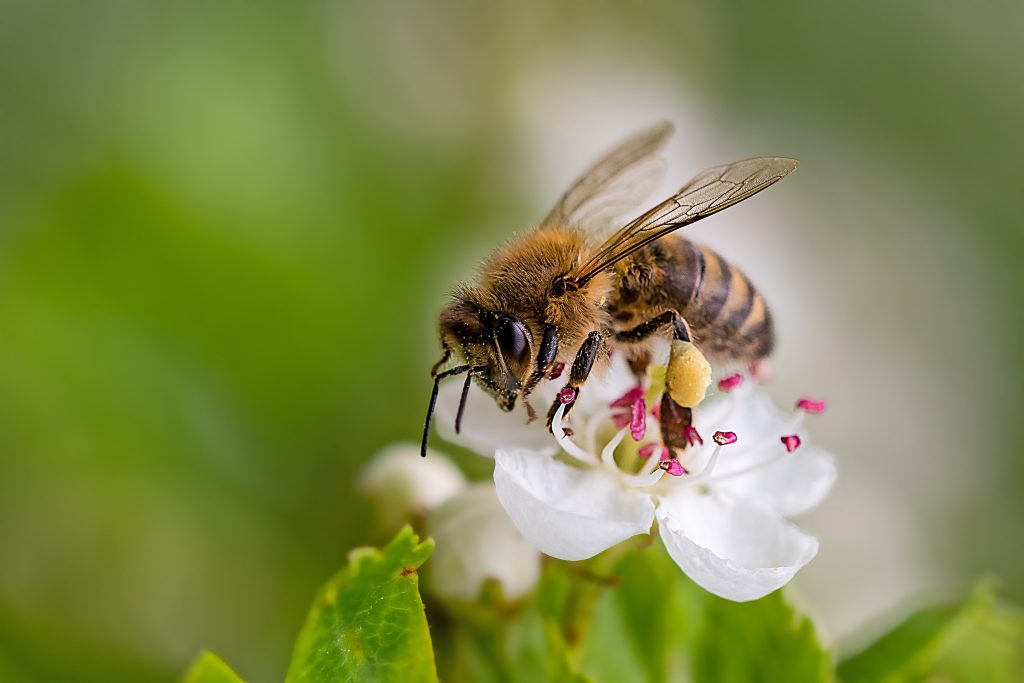
Learn how you can help support your local honey bee population by planting pollinator-friendly trees in your yard
This week, we are going to take a break from talking about pests that can cause damage to your trees and talk about an insect that benefits our ecosystems and your trees: honey bees. More specifically, we are going to talk about the importance of planting trees in your yard that support bees and other pollinators and the types of trees that attract and benefit pollinators.
Some people see bees as pests because of their ability to sting and wonder why plant trees that are going to attract more of them? Bees and other pollinators such as butterflies, birds, moths, flies, and beetles are extremely important within the ecosystem for pollinating plants including flowering plants and even staple crop plants. Unfortunately, the populations for most pollinators are in decline due to various factors which makes it important to support these species in any way we can.
There is no denying that bees and other pollinators play a crucial role in the ecosystem and their disappearance can have massive ripple effects that will no doubt affect humans. A great way you can help support pollinators like bees is to plant trees and other flowering plants on your property that attract them. In this guide, we are going to discuss the importance of bees and other pollinators and the types of trees you can plant in your yard that can help support their populations.
If you are ready to plant a new tree in your yard but you are not sure how to do it properly, our professional arborists at Hendricksen Tree Care can help with our tree planting services.
What are Pollinators?
Pollinators are animals that collect pollen from male flowers and bring the pollen to female flowers where the male gametes from the pollen fertilize the ovules of the female flower. Approximately 80 percent of flowering plants and 75 percent of staple crop plants must be pollinated by pollinators according to the United States Department of Agriculture.
Bees are the most important pollinators and are often the first pollinators that come to mind, but pollinators also include butterflies, moths, ants, beetles, flies, and birds such as hummingbirds.
Why are Pollinators Important?
Pollinators are important because without them, many useful plants would not be able to reproduce. As mentioned above, many crop plants that produce fruits and vegetables are reliant on pollinators for reproduction. Without pollinators, we would not be able to grow many fruits and vegetables which deprives humans and animals of necessary food sources.
The disappearance of bees and other pollinators would start a domino effect in the ecosystem in which the production of plants that produce fruits and vegetable would stop which would have a devastating effect on the population of animals that rely on these plants for food. The dying off of plant eating animals would then have an effect on the carnivores who prey on these animals. The lack of pollination of crop plants and the dying off of prey and predator animals as a result would decrease the human food supply.
A famous quote attributed to Albert Einstein further attests to the importance of bees, “If the bee disappears from the surface of the earth, man would have no more than four years to live.”
Why are Pollinator Populations Declining?
There are several factors that are leading to declining populations of bees and other pollinators including habitat loss, misuse of pesticides, invasive plant species, disease, parasites, monoculture farming, and the general lack of flowering plants.
How Can I Help the Pollinators?
Unfortunately, stopping many of the factors contributing to the decline of bee and pollinator populations would require large scale changes such as the use of farmland and pesticides and preventing the loss of natural habitats. However, there is one thing you can do to help, you can plant trees for bees and pollinators that support their populations.
Flowering trees and trees that produce fruit attract bees and other pollinators. Bees that emerge from overwintering rely on these tree species early in the spring for food sources like nectar and pollen. The pollen is then spread to female plants to initiate fertilization and in the case of honeybees, the nectar is used to make honey. Planting trees that attract bees and other pollinators can support their population by providing them with food and they will then pollinate more supporting plants which will lead to the reproduction of those plants, allowing the populations of the pollinators to grow.
When planting new plants to attract bees and pollinators, make sure you follow these directions for the best results:
- Plant native flowering plants: Native trees and pants that produce flowers and fruits are typically the best options for attracting bees and other pollinators. Native plants have the nectar and pollen that is best for native pollinators, and they grow well in the native climate and soils. The following section discusses the best tree species to plant to attract pollinators.
- Plant in full sun: You should plant pollinator friendly plants in full sun as some pollinators like butterflies will only feed in the sun.
- Provide blooms all season: Different types of flowers bloom at different times of the year and for varying lengths of time. You can better support pollinators by planting flowering plants that bloom at different times of the growing season so that there is always a plant in bloom.
- Plant in groups: If you plant pollinator friendly pants in groups, you will attract more pollinators than if you plant them scattered throughout your yard.
- Do not use insecticides: Insecticide use is one of the main contributors to declining pollinator populations. Do not use any pesticides on your pollinator friendly plants.
What Types of Trees are Best for Pollinators in Chicago, IL?
As mentioned above, fruit trees and flowering trees are the best types of trees that attract bees and other pollinators. The following are the specific types of native pollinator friendly tree species you should consider planting:
- American basswood: American basswood trees (Tilia americana), also known as linden trees, are great for bees and other pollinators. Their flowers contain nectar that will attract honeybees, bumble bees, sweat bees, flies, and wasps.
- Dogwood trees: Flowering dogwood trees (Cornus florida) have large flowers that bloom in mid-spring. These trees attract several species of mining bees.
- Eastern redbud trees: Redbud trees such as the eastern redbud (Cercis canadensis) are flowering trees that attract carpenter bees and honeybees. The small red flowers of redbuds bloom in the spring and they will attract more bees in full sun.
- Black locust trees: Locust trees such as the black locust (Robinia pseudoacacia) are a flowering tree that is a favorite of honeybees and other foraging bees. These trees grow well in harsh, urban environments and while their flowers are not very showy, they do attract bees.
- Oak trees: Oak trees such as red oaks (Quercus falcata) and white oaks (Quercus alba) are beneficial for bees because their catkins and bark provide shelter for bees.
- Maple trees: Maple trees such as the red maple (Acer rubrum), silver maple (Acer saccharinum), sugar maple (Acer saccharum), and box-elder maple (Acer negundo) attract bees with their sap and nectar rich flowers. Some bee species can even burrow through the bark themselves to get the sap.
- Cherry trees: Cherry trees are fruit trees that attract bees as well as other pollinators like birds, moths, and butterflies. These trees are dependent on pollinators to produce fruit and their white flowers attract pollinators such as bees, moths, and butterflies. The fruit on these trees attracts different species of birds.
- Crabapple trees: Crabapple trees are fruit trees that need the help of pollinators to produce fruit. Bees are attracted to the white, pink, and red flowers for food and the fruit of crabapple trees attracts birds.
- Serviceberry trees: Serviceberry trees (Amelanchier spp.) bloom early in the spring and produce white nectar rich flowers that attract honeybees and mining bees. The berries produced by these trees are eaten by birds.
Types of Honey Made by Honeybees
Honeybees are just one type of bee in the Chicago area, and they play a very important role in pollinating crop plants. They also produce many types of honeys that are edible for humans and animals, and they are domesticated by beekeepers for the production of honey.
For as important as honeybees are as pollinators, they are not native to North America. The first honeybees were brought to the U.S. from Europe, and they have since become an important part of our ecosystem. Unfortunately, honeybee populations have been in decline so much that the U.S. Department of the Interior is concerned about pollination. There is still much work to be done to conserve honeybee populations, but you can do your part by planting one of the tree species mentioned in the above section that attract honeybees.
There are over 300 different varieties of honey created by honeybees. The various types of honey differ in color, aroma, and taste which is largely determined by which plants the honeybees used to gather nectar. Beekeepers place hives near specific orchards and gardens to encourage the creation of specific types of honey.
The following are the main types of honey created by honeybees:
- Basswood: Basswood honey is a light golden color that has a fresh, lingering flavor similar to ripening fruit.
- Alfalfa: Alfalfa honey has a golden color, mild flavor, and beeswax aroma, and it is made from purple blossoms.
- Buckwheat: Buckwheat honey is dark in color, and it has a pungent odor and flavors of molasses. This honey is typically produced in the northern and eastern U.S.
- Avocado: Avocado honey is golden brown in color and has a well-rounded, caramelized molasses flavor and floral aftertaste. It is produced primarily in California.
- Blueberry: Blueberry honey has a moderate fruit flavor and an aroma similar to green leaves with a touch of lemon. This honey is produced mostly in New England.
- Clover: Most honey in the U.S. is produced from clover plants. Clover honey has a light yellow color and sweet floral flavor.
- Eucalyptus: Eucalyptus honey is produced from eucalyptus plants and has a mildly sweet herbal flavor.
- Orange blossom: Orange blossom honey is orange brown in color and has a sweet, fruity taste. It is produced from citrus blossoms in California, Florida, and Texas.
- Fireweed: Fireweed honey is produced from fireweed plants that are the first plants to grow back after a forest fire. This honey is clear in color and has a sweet taste with tea-like notes.
- Sage: Sage honey is very light in color and has a sweet clover-like flavor and floral aftertaste. It is produced from sage plants in California.
- Sourwood: Sourwood honey is produced from sourwood trees, and it has a sweet, spicy, anise flavor and aroma.
- Tupelo: Tupelo honey has a floral, herbal, and fruity flavor and aftertaste. It is produced from tupelo trees in the swamps of the southeastern U.S.
Planting Pollinator Friendly Trees with Hendricksen Tree Care
The decline in pollinator populations, especially bees, is alarming because they are an important part of the ecosystem. If these populations continue to decline, this can have wide ranging effects for plant and animal species as well as humans. You can do your part to help by planting one of the tree species discussed in this guide that will attract and support bee and pollinator species and allow their populations to grow.
Planting a new tree is not as easy as it seems. You need to plant the tree in an area where it can grow unobstructed and get the sunlight and nutrients from the soil it needs to thrive. Our professional arborists at Hendricksen Tree Care provide tree planting services to help you plant your new pollinator friendly trees within your yard or landscape. Once these trees become established, we can provide ongoing tree care and maintenance to ensure the health of your trees so that they continue to attract important pollinators.
Hendricksen Tree Care provides complete tree care services for homes and commercial properties in Arlington Heights, Northbrook, Wilmette, Park Ridge, Winnetka, Glenview, Barrington, Lake Forest, and the surrounding north and northwest Chicago suburbs.
